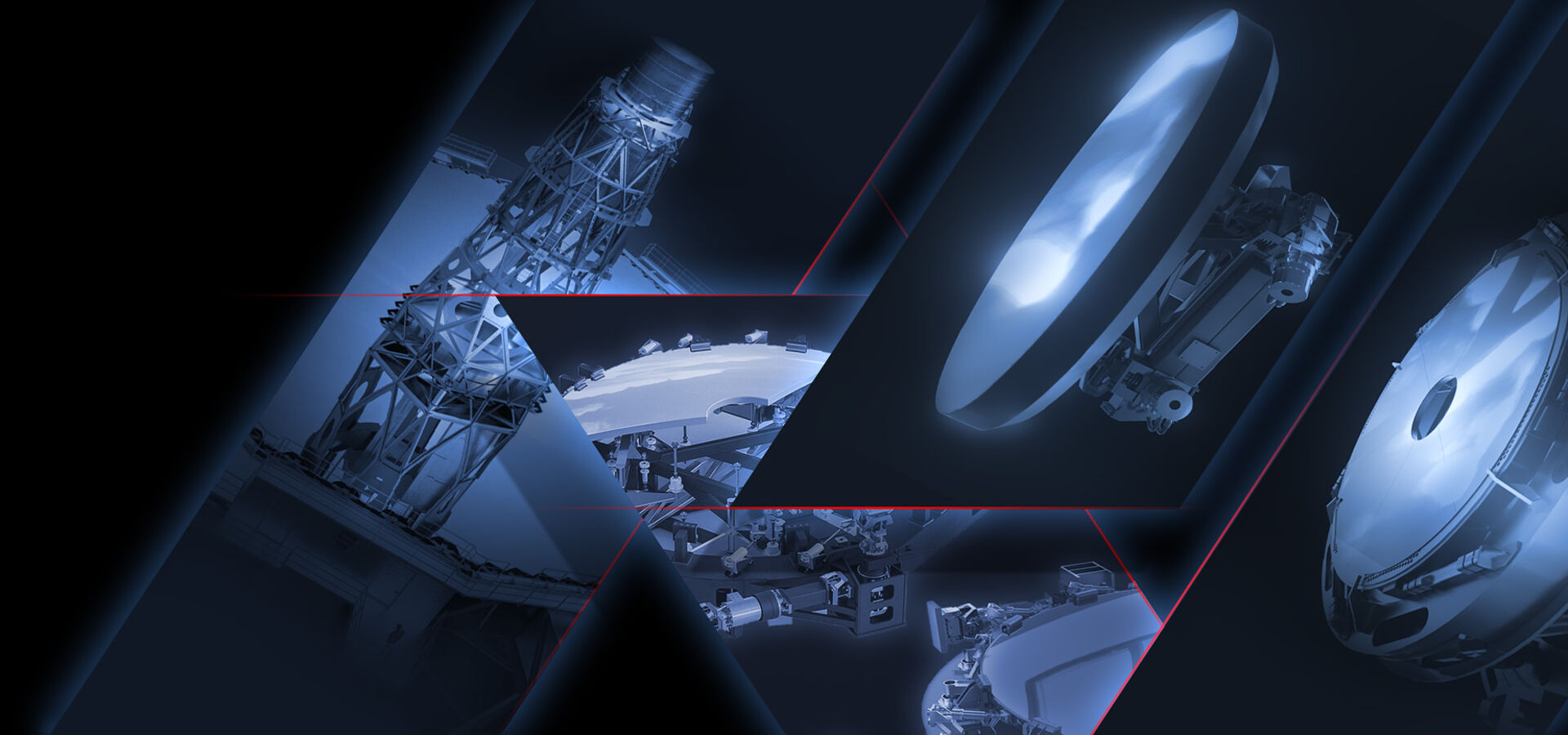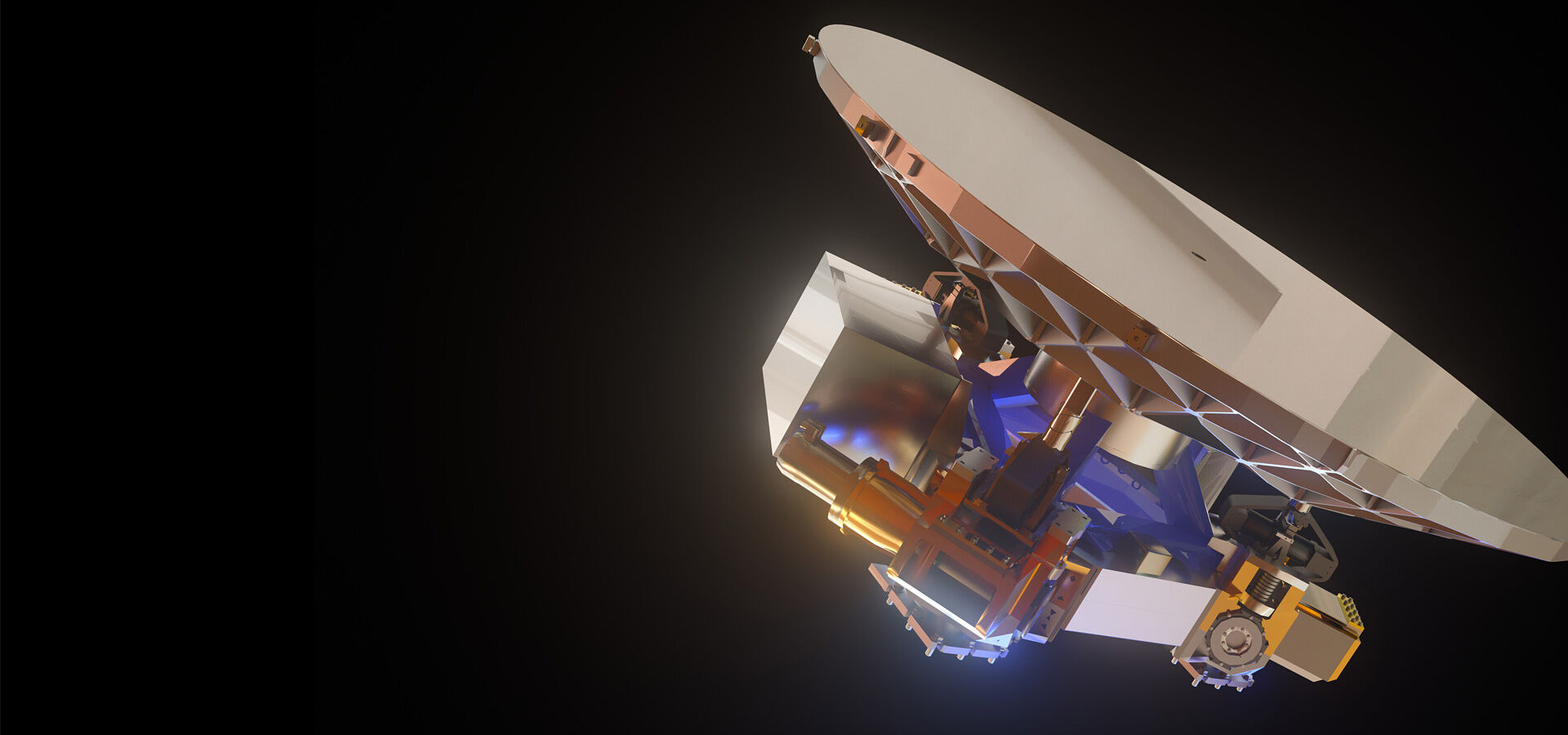
European
Southern
Observatory


The largest tip-tilt mirror in the world
M5 is the smallest mirror on the ELT, but the biggest tip-tilt mirror ever employed in a telescope. Together with M4, it is a crucial component of the ELT’s adaptive optics system. Its precise tip and tilt movements will ensure images are stabilised before they reach the ELT instruments.
M5 is the smallest mirror on the ELT, but the biggest tip-tilt mirror ever employed in a telescope. Together with M4, it is a crucial component of the ELT’s adaptive optics system. Its precise tip and tilt movements will ensure images are stabilised before they reach the ELT instruments.
The largest tip-tilt mirror in the world
M5 is the smallest mirror on the ELT, but the biggest tip-tilt mirror ever employed in a telescope. Together with M4, it is a crucial component of the ELT’s adaptive optics system. Its precise tip and tilt movements will ensure images are stabilised before they reach the ELT instruments.
With a 39-metre diameter primary mirror, the ELT will be equipped with five mirrors in total. Two of them — M4 and M5 — form part of the adaptive optics system of the telescope. Their unique synergy will allow the ELT to take extremely high-quality, sharp images. The M5 mirror is hosted in a special cell that includes a fast tip-tilt system for image stabilisation that will compensate perturbations caused by the telescope mechanisms, wind vibrations, and atmospheric turbulence. This implies that the mirror must be simultaneously very light and very rigid.
When complete, M5 will be a flat, elliptical mirror measuring 2.7 by 2.2 metres constructed from six lightweight silicon-carbide segments brazed together. ESO has signed contracts for the manufacture of M5 with the French companies Safran Reosc and Mersen Boostec. Safran Reosc will supply the M5 mirror along with the auxiliary equipment required for its handling, transport, operation and maintenance. Mersen Boostec will supply the mirror’s lightweight substrate to Safran Reosc’s specifications, and will also be responsible for the supply of the M5 replacement blanks if necessary. The Spanish company SENER Aeroespacial will carry out the design, construction and verification of the cell for the M5 mirror, as well as its control system and auxiliary equipment.
Please check the News & Multimedia section for recent news, images and videos on the M5 mirror.
The M5 unit folds the optical beams towards each Nasmyth focus along the telescope elevation axis. It includes a switching mechanism, part of the telescope structure that rotates to allow the unit to feed different Nasmyth platforms and instruments. The unit also stabilises the image movements, which are induced by telescope mechanisms and wind-shaking vibrations, by adjusting the mirror’s tip and tilt angles to a few tens of milli-arcsec accuracy, within a 10 Hz bandwidth.
The M5 unit consists of the M5 cell and the M5 mirror assembly, in addition to auxiliary equipment (integration, handing, transport, storage, and maintenance equipment). The M5 cell includes the tip-tilt stage, which consists of a base frame and tip-tilt actuators, and the M5 cell structure.
The M5 cell is fixed to the main structure of the ELT. It is a stiff structure that provides interface to the M5 tip-tilt stage at an accurate location in the telescope and allows for handling the M5 mirror assembly and tip-tilt stage as a single component (the M5 subunit), when installing it into, or removing it from, the telescope for integration and maintenance. The tip-tilt stage provides mounting interfaces to the mirror assembly and drives it along tip and tilt.
The three tip-tilt actuators drive the M5 mirror assembly by changing their length along the mirror’s normal axis. The base frame holds the tip-tilt actuators and provides interface to the mirror’s lateral support.
The M5 mirror assembly includes the mirror itself and the mirror support, which is made of the M5 axial support and the M5 lateral supports. The mirror is flat and has an elliptical shape of about 2.7 by 2.2 metres. The silicon-carbide stiff and lightweight structure allows the mirror to achieve high stiffness-to-weight performance, and provides an optical surface that can be polished to the required optical quality.
The axial support holds the M5 mirror along its optical axis and transmits the tip-tilt displacements generated by the actuators to it. The axial support also constrains the mirror axial degrees of freedom along the optical axis and decouples the other ones to minimise the spurious forces transmitted to the mirror.
The lateral support holds the mirror along its in-plane directions. It constrains its in-plane degrees of freedom and decouples the other ones to allow tip-tilt displacements by means of a membrane connection at the mirror centre.
We use cookies that are essential for accessing our websites and using our services. We also use cookies to analyse, measure and improve our websites’ performance, to enable content sharing via social media and to display media content hosted on third-party platforms.
The European Organisation for Astronomical Research in the Southern Hemisphere (ESO) is the pre-eminent intergovernmental science and technology organisation in astronomy. It carries out an ambitious programme focused on the design, construction and operation of powerful ground-based observing facilities for astronomy.
This Cookies Policy is intended to provide clarity by outlining the cookies used on the ESO public websites, their functions, the options you have for controlling them, and the ways you can contact us for additional details.
Cookies are small pieces of data stored on your device by websites you visit. They serve various purposes, such as remembering login credentials and preferences and enhance your browsing experience.
Essential cookies (always active): These cookies are strictly necessary for the proper functioning of our website. Without these cookies, the website cannot operate correctly, and certain services, such as logging in or accessing secure areas, may not be available; because they are essential for the website’s operation, they cannot be disabled.
Functional Cookies: These cookies enhance your browsing experience by enabling additional features and personalization, such as remembering your preferences and settings. While not strictly necessary for the website to function, they improve usability and convenience; these cookies are only placed if you provide your consent.
Analytics cookies: These cookies collect information about how visitors interact with our website, such as which pages are visited most often and how users navigate the site. This data helps us improve website performance, optimize content, and enhance the user experience; these cookies are only placed if you provide your consent. We use the following analytics cookies.
Matomo Cookies:
This website uses Matomo (formerly Piwik), an open source software which enables the statistical analysis of website visits. Matomo uses cookies (text files) which are saved on your computer and which allow us to analyze how you use our website. The website user information generated by the cookies will only be saved on the servers of our IT Department. We use this information to analyze www.eso.org visits and to prepare reports on website activities. These data will not be disclosed to third parties.
On behalf of ESO, Matomo will use this information for the purpose of evaluating your use of the website, compiling reports on website activity and providing other services relating to website activity and internet usage.
Matomo cookies settings:
Additional Third-party cookies on ESO websites: some of our pages display content from external providers, e.g. YouTube.
Such third-party services are outside of ESO control and may, at any time, change their terms of service, use of cookies, etc.
YouTube: Some videos on the ESO website are embedded from ESO’s official YouTube channel. We have enabled YouTube’s privacy-enhanced mode, meaning that no cookies are set unless the user actively clicks on the video to play it. Additionally, in this mode, YouTube does not store any personally identifiable cookie data for embedded video playbacks. For more details, please refer to YouTube’s embedding videos information page.
Cookies can also be classified based on the following elements.
Regarding the domain, there are:
As for their duration, cookies can be:
Cookie settings: You can modify your cookie choices for the ESO webpages at any time by clicking on the link Cookie settings at the bottom of any page.
In your browser: If you wish to delete cookies or instruct your browser to delete or block cookies by default, please visit the help pages of your browser:
Please be aware that if you delete or decline cookies, certain functionalities of our website may be not be available and your browsing experience may be affected.
You can set most browsers to prevent any cookies being placed on your device, but you may then have to manually adjust some preferences every time you visit a site/page. And some services and functionalities may not work properly at all (e.g. profile logging-in, shop check out).
The ESO Cookies Policy may be subject to future updates, which will be made available on this page.
For any queries related to cookies, please contact: pdprATesoDOTorg.
As ESO public webpages are managed by our Department of Communication, your questions will be dealt with the support of the said Department.